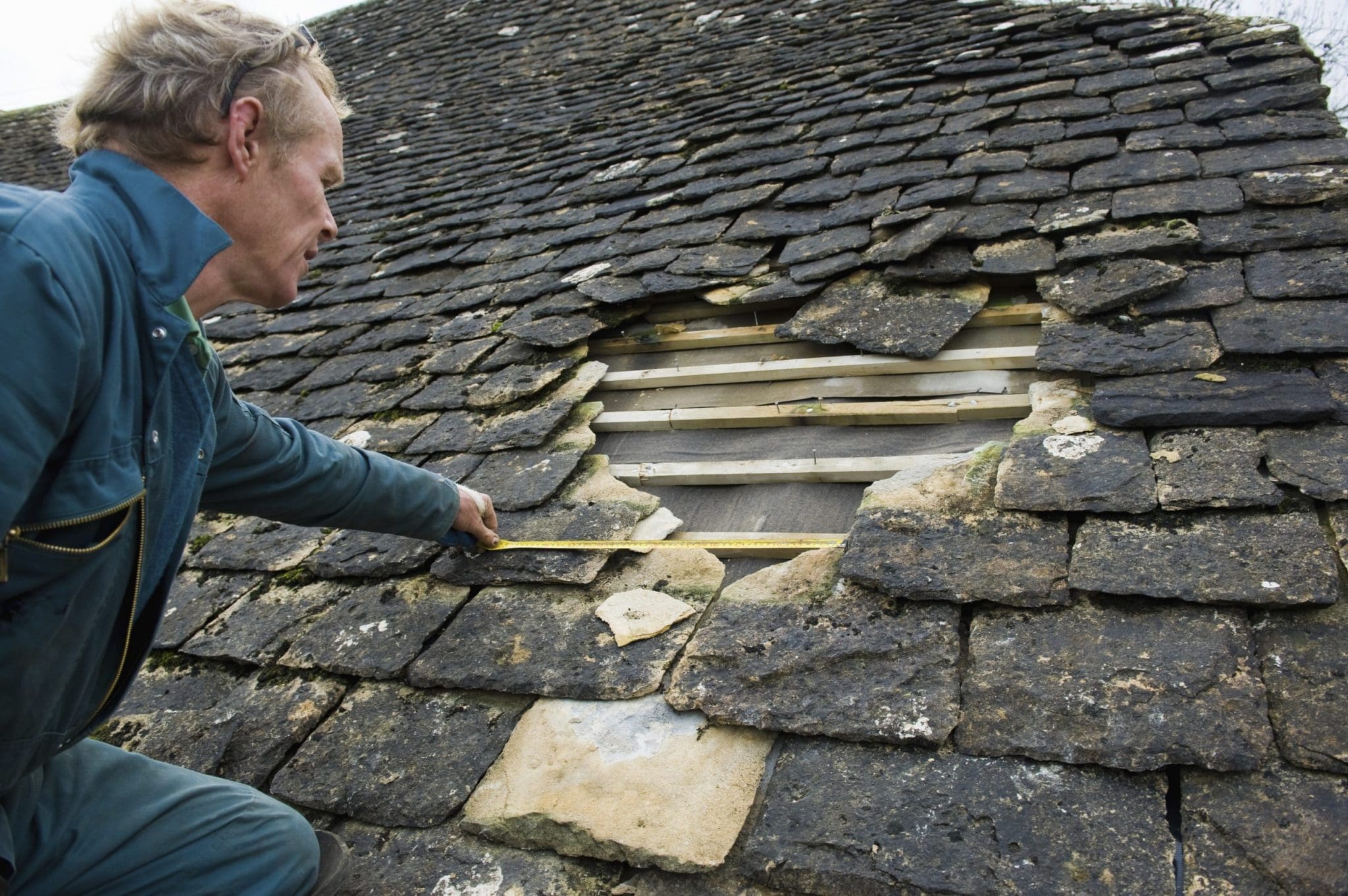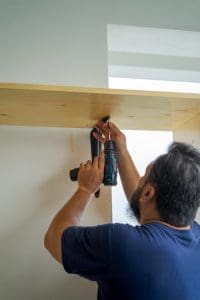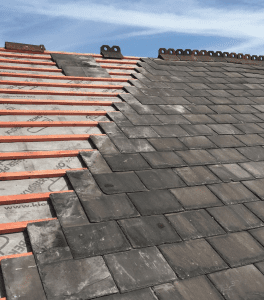A Comprehensive Guide: What to Do When You Have a Leaking Roof in the UK
The exterior of your home serves a critical role: protecting you, your family, and your possessions from the elements. But when unforeseen issues like a leaking roof occur, this sense of security can quickly give way to stress and frustration. A leaking roof has the potential to cause significant structural damage and costly repairs if not addressed promptly and correctly. In this detailed guide, we’ll walk you through a step-by-step process to follow when a leak strikes your roof. By acting quickly and taking the proper precautions, you can minimise damage and safeguard your home and family.
1. Stay Calm and Assess the Situation
When you first notice a roof leak, whether it’s a slow drip or a steady stream of water, the initial reaction may be to panic. However, staying calm is crucial to making rational decisions. The first step is to assess the severity of the situation. Is the leak small and localised, or is water pouring into your home rapidly? This will help guide your next steps.
For minor leaks, you may have more time to address the issue, but larger leaks require immediate action to mitigate damage. Calmly evaluate whether the leak is coming from a single point or if multiple areas are affected, which can indicate more widespread roofing problems. In either case, acting swiftly but strategically is key.
2. Collect and Contain the Water
Once you’ve assessed the leak, your priority should be to contain any water entering your home. Use buckets, bowls, or other containers to catch dripping water and prevent it from damaging floors or furniture. If the water is pooling in certain areas, mop it up or use towels to absorb it. Be cautious of slippery floors and avoid walking in wet areas to reduce the risk of accidents.
If the ceiling has started to sag from water accumulation, poke a small hole in it to allow the water to drain in a controlled manner. This may seem counterintuitive, but it can prevent a larger, more damaging collapse from occurring.
3. Protect Your Belongings
Move valuable items such as electronics, furniture, and personal belongings out of the affected area as quickly as possible. Water can cause irreversible damage to electrical appliances and sentimental items, so the sooner you relocate them, the better. Cover any furniture or carpets that cannot be moved with plastic sheeting or waterproof materials to shield them from water damage. Ensuring your possessions are protected will save you time, money, and stress in the long run.
4. Identify the Source of the Leak
Finding the exact source of a roof leak can be tricky. Water doesn’t always travel in a straight line, so the visible leak in your ceiling may not be directly beneath the spot where the roof is damaged. Start by inspecting your loft or attic, looking for wet spots, water stains, or mould growth along the rafters and insulation. Trace the path of the water as far back as possible to locate where it’s entering your home.
If weather permits and it’s safe, you can also examine the roof from the outside. Look for missing or damaged tiles, cracked flashing, or any gaps around chimneys and skylights. However, if climbing onto the roof presents a risk, it’s best to leave this task to a professional.
5. Apply a Temporary Patch (If Safe)
If you’re able to locate the source of the leak and the weather conditions allow for it, consider applying a temporary patch. Roofing tarps, plywood, or even duct tape can serve as quick fixes to stop or slow the leak until a professional can perform a more permanent repair. However, exercise extreme caution when accessing your roof. Never attempt to climb onto a roof during adverse weather conditions or if you’re unsure about the structural integrity of the roof. Temporary fixes are just that—temporary—and should be followed up with a professional inspection as soon as possible.
6. Contact a Professional Roofing Contractor
Temporary patches can buy you some time, but a qualified roofing contractor is essential for identifying and fixing the root cause of the leak. Once you’ve contained the water and applied any temporary solutions, call a reputable roofing contractor, such as 3D Construction, for a thorough inspection and repair. Be sure to explain the situation in detail when scheduling your appointment so that the contractor knows what to expect.
Professional roofers will not only fix the leak but also assess the overall health of your roof to prevent future issues. Many leaks are symptoms of larger structural problems, so getting an expert’s opinion is crucial for long-term peace of mind.
7. Document the Damage
Before any repairs are made, take photos and videos of the affected areas. Document the water damage to your ceilings, walls, floors, and any personal property that was affected. This documentation will be valuable when filing insurance claims or negotiating with contractors. Make sure to capture images of the roof itself if you can safely do so. Having clear, dated records of the damage will help streamline the insurance process and ensure that you’re fairly compensated for repairs.
8. Review Your Insurance Policy
Most homeowner’s insurance policies cover roof damage caused by unforeseen events, such as storms or falling trees. However, coverage may not extend to damage caused by wear and tear or neglect, so it’s important to review your policy’s terms. Contact your insurance provider to report the damage and initiate a claim. Be prepared to provide documentation, including photos, videos, and any repair estimates from your roofing contractor.
If the roof is significantly damaged, your insurance adjuster may need to inspect the property. Ensure you have all necessary paperwork ready to expedite the process and receive reimbursement for repairs.
9. Consider Preventative Measures
Once the immediate problem has been resolved, take the opportunity to implement preventative measures to reduce the likelihood of future leaks. Regular maintenance is key to extending the life of your roof. Consider scheduling annual or bi-annual roof inspections with a professional roofing company. During these inspections, a professional can identify minor issues, such as loose tiles or small cracks, before they develop into more significant problems.
Additionally, clean your gutters and downspouts regularly to ensure proper drainage, as clogged gutters can contribute to water buildup and leaks. Trimming overhanging trees and installing protective measures, like leaf guards, can further reduce the chance of debris accumulating on your roof.
10. Stay Informed About Your Roof’s Condition
It’s essential to stay informed about the condition of your roof and any repairs or renovations it has undergone. Understanding your roof’s age, materials, and previous work will help you anticipate when it may need more significant repairs or replacement. Keep a record of inspections, repairs, and warranties to ensure you are well-prepared for any future issues. By staying proactive and knowledgeable, you can maintain a safe and structurally sound home.
Conclusion
Dealing with a roof leak can be overwhelming, but by following these steps, you can minimise damage and maintain control of the situation. The most important things are to stay calm, act quickly, and seek professional help when necessary. Temporary fixes can help in the short term, but a leaking roof should always be addressed by a qualified roofing contractor to prevent recurring problems. With proper maintenance and timely action, you can ensure the safety and longevity of your home’s roofing system, protecting your investment and providing peace of mind for years to come.
For reliable roof inspections, repairs, and maintenance across the UK, contact 3D Construction—your trusted partner for all your roofing needs.




